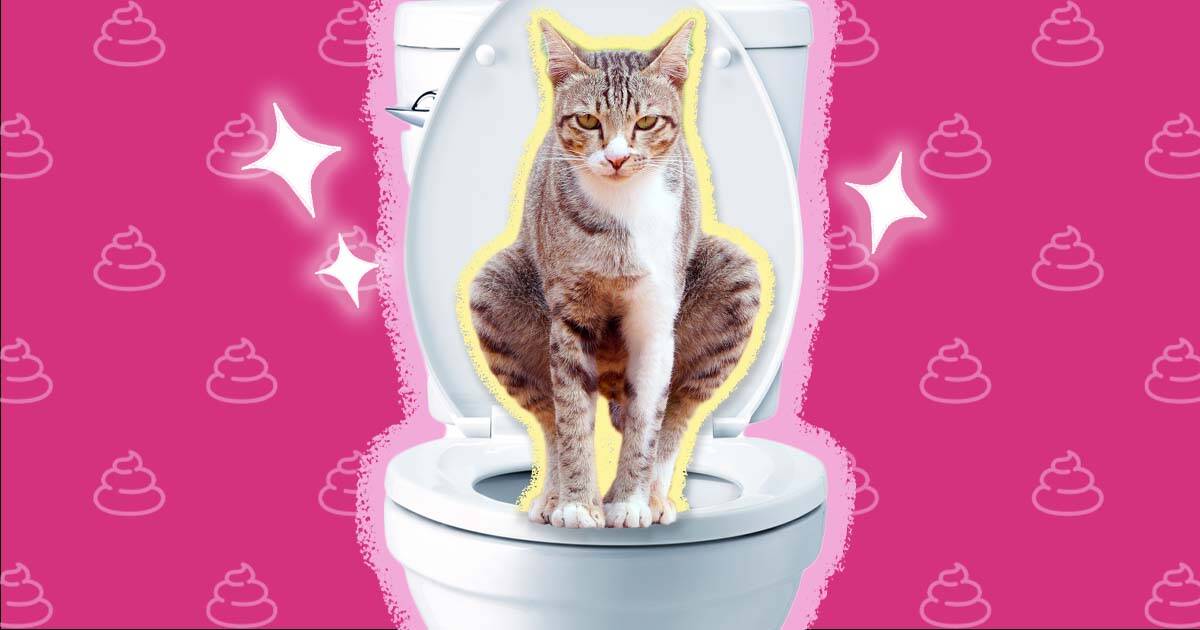Reasons Flushing Cat Poop Down Your Toilet Isn't a Good Idea - Advice for Proper Handling
Reasons Flushing Cat Poop Down Your Toilet Isn't a Good Idea - Advice for Proper Handling
Blog Article
What're your thoughts and feelings about Don’t flush cat feces down the toilet?

Intro
As feline owners, it's essential to bear in mind how we throw away our feline friends' waste. While it may seem convenient to flush feline poop down the commode, this method can have harmful repercussions for both the setting and human wellness.
Ecological Impact
Purging pet cat poop presents dangerous virus and bloodsuckers right into the supply of water, positioning a considerable risk to aquatic ecological communities. These impurities can adversely affect marine life and concession water high quality.
Health and wellness Risks
In addition to ecological worries, flushing pet cat waste can likewise pose wellness risks to human beings. Feline feces might include Toxoplasma gondii, a bloodsucker that can trigger toxoplasmosis-- a possibly serious illness, especially for expectant women and people with weakened immune systems.
Alternatives to Flushing
Fortunately, there are much safer and much more accountable methods to take care of cat poop. Consider the adhering to alternatives:
1. Scoop and Dispose in Trash
The most common approach of disposing of feline poop is to scoop it right into a biodegradable bag and throw it in the trash. Make certain to use a committed clutter scoop and get rid of the waste immediately.
2. Usage Biodegradable Litter
Go with naturally degradable feline trash made from materials such as corn or wheat. These litters are eco-friendly and can be safely gotten rid of in the trash.
3. Hide in the Yard
If you have a lawn, think about burying pet cat waste in an assigned location away from vegetable yards and water sources. Be sure to dig deep adequate to prevent contamination of groundwater.
4. Mount a Pet Waste Disposal System
Purchase a pet waste disposal system especially developed for pet cat waste. These systems use enzymes to break down the waste, lowering odor and ecological influence.
Conclusion
Accountable pet ownership expands beyond offering food and sanctuary-- it additionally entails proper waste administration. By avoiding flushing cat poop down the bathroom and going with alternative disposal methods, we can reduce our environmental footprint and secure human wellness.
Why Can’t I Flush Cat Poop?
It Spreads a Parasite
Cats are frequently infected with a parasite called toxoplasma gondii. The parasite causes an infection called toxoplasmosis. It is usually harmless to cats. The parasite only uses cat poop as a host for its eggs. Otherwise, the cat’s immune system usually keeps the infection at low enough levels to maintain its own health. But it does not stop the develop of eggs. These eggs are tiny and surprisingly tough. They may survive for a year before they begin to grow. But that’s the problem.
Our wastewater system is not designed to deal with toxoplasmosis eggs. Instead, most eggs will flush from your toilet into sewers and wastewater management plants. After the sewage is treated for many other harmful things in it, it is typically released into local rivers, lakes, or oceans. Here, the toxoplasmosis eggs can find new hosts, including starfish, crabs, otters, and many other wildlife. For many, this is a significant risk to their health. Toxoplasmosis can also end up infecting water sources that are important for agriculture, which means our deer, pigs, and sheep can get infected too.
Is There Risk to Humans?
There can be a risk to human life from flushing cat poop down the toilet. If you do so, the parasites from your cat’s poop can end up in shellfish, game animals, or livestock. If this meat is then served raw or undercooked, the people who eat it can get sick.
In fact, according to the CDC, 40 million people in the United States are infected with toxoplasma gondii. They get it from exposure to infected seafood, or from some kind of cat poop contamination, like drinking from a stream that is contaminated or touching anything that has come into contact with cat poop. That includes just cleaning a cat litter box.
Most people who get infected with these parasites will not develop any symptoms. However, for pregnant women or for those with compromised immune systems, the parasite can cause severe health problems.
How to Handle Cat Poop
The best way to handle cat poop is actually to clean the box more often. The eggs that the parasite sheds will not become active until one to five days after the cat poops. That means that if you clean daily, you’re much less likely to come into direct contact with infectious eggs.
That said, always dispose of cat poop in the garbage and not down the toilet. Wash your hands before and after you clean the litter box, and bring the bag of poop right outside to your garbage bins.
https://trenchlesssolutionsusa.com/why-cant-i-flush-cat-poop/

Do you appreciate reading up on Don’t flush cat feces down the toilet? Leave a review directly below. We will be interested to see your thoughts about this content. In hopes that you come back again soon. If you enjoyed our page if you please be sure to pass it around. Thanks a bunch for your time. Come back soon.
Book Now Report this page